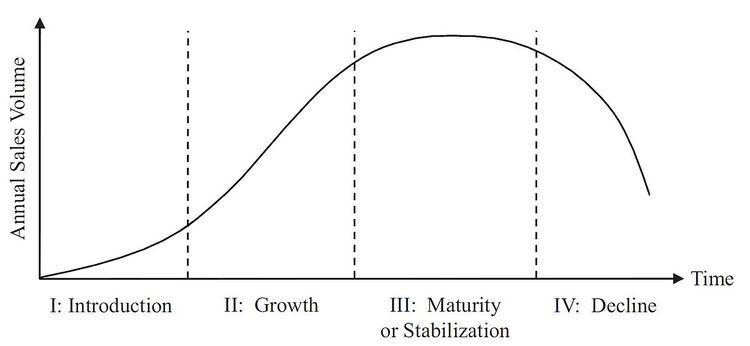 | ||
Product life-cycle management (PLM) is the succession of strategies by business management as a product goes through its life-cycle. The conditions in which a product is sold (advertising, saturation) changes over time and must be managed as it moves through its succession of stages.
Contents
Goals
The goals of Product Life Cycle management (PLM) are to reduce time to market, improve product quality, reduce prototyping costs, identify potential sales opportunities and revenue contributions, and reduce environmental impacts at end-of-life. To create successful new products the company must understand its customers, markets and competitors. Product Lifecycle Management (PLM) integrates people, data, processes and business systems. It provides product information for companies and their extended supply chain enterprise. PLM solutions help organizations overcome the increased complexity and engineering challenges of developing new products for the global competitive markets.
Product life cycle
The concept of product life cycle (PLC) concerns the life of a product in the market with respect to business/commercial costs and sales measures. The product life cycle proceeds through multiple phases, involves many professional disciplines, and requires many skills, tools and processes. PLC management makes the following three assumptions:
Characteristics of PLC stages
The four main stages of a product's life cycle and the accompanying characteristics are:
Identifying PLC stages
Identifying the stage of a product is an art more than a science, but it's possible to find patterns in some of the general product features at each stage. Identifying product stages when the product is in transition is very difficult.
Limitations
It is important for marketing managers to understand the limitations of the PLC model. It is difficult for marketing management to gauge accurately where a product is on its life cycle. A rise in sales per se is not necessarily evidence of growth, a fall in sales per se does not typify decline and some products, e.g. Coca-Cola and Pepsi, may not experience a decline.
Differing products possess different PLC "shapes". A fad product develops as a steep sloped growth stage, a short maturity stage, and a steep sloped decline stage. Products such as Coca-Cola and Pepsi experience growth, but also a constant level of sales over a number of decades. A given product (or products collectively within an industry) may hold a unique PLC shape such that use of typical PLC models are only useful as a rough guide for marketing management.
For specific products, the duration of each PLC stage is unpredictable and it's difficult to detect when maturity or decline has begun.
Because of these limitations, strict adherence to PLC can lead a company to misleading objectives and strategy prescriptions.
